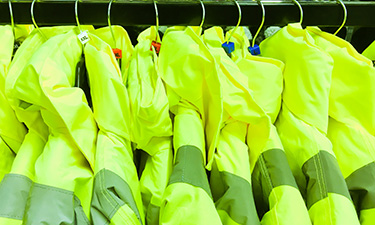Phthalate
The origin of the word 'phthalate'
“PHTHALATE”: difficult to say and difficult to spell. But where did this word originate? This curious word is steeped in 2,000 years of myths and scientific advancement. Biblical in origin we shall trace its humble beginnings to the versatile chemical molecules of today.
“PHTHALATE”: difficult to say and difficult to spell. But where did this word originate? This curious word is steeped in 2,000 years of myths and scientific advancement. Biblical in origin we shall trace its humble beginnings to the versatile chemical molecules of today. A class of molecules that are still evolving and making a significant contribution, in the form of plasticizers, to our everyday lives, sometimes in the most surprising ways.
Essentially used in PVC applications phthalate plasticizers add the vital ingredient that makes PVC flexible yet hard wearing. Plasticizers allow us to create unique shapes and design as well as protect the wiring and cables that bring us power to our homes and our mobile world.
2000 years of evolution
So where did the journey of this sophisticated ubiquitous molecule begin? The earliest recording of origin of the word phthalate comes from the Old Testament. Ascribed to a Jewish tribe known as the Maccabeans they used the word “naphtha” or “nephtar”, which means purification. The word naphtha came from Latin and Greek where it derived from the original Persian. In Ancient Greece, it was used to refer to any petroleum or pitch. Naphtha, as a type of crude oil, was used as an ingredient in “Greek Fire” an incendiary weapon used in naval battles as it could continue burning while floating on water.
Even today naphtha is still used as a general term to refer to flammable liquid hydrocarbon mixtures and is the root of the word naphthalene. This clearly is a close cousin the word phthalate. Naphthalene was discovered in the 1820’s as a pungent white solid and its chemical formula determined by Michael Faraday in 1826. Today it is associated for example with the pungent smell of mothballs.
In 1836 a French chemist, Laurent, oxidized naphthalene with chromic acid and created phthalic anhydride. He first coined the term phthalic acid. Being derivatives of naphthalene it is easy to see how phthalic acid and phthalic anhydride got their names from that molecule. Phthalic Acid is produced today through the catalytic oxidation of ortho-xylene or naphthalene creating Phthalic Anhydride, which the subsequent hydrolysis forms the acid.
Now we are just one step away from our modern day phthalates. Phthalic acids have three isomers orthophthalic, isophthalic and terephthalic and phthalates are derivatives of all three phthalic acids. Phthalates were first introduced in the 1920’s but really took off in the 1930’s when PVC became commercially available as part of the booming plastics industry. Ever since PVC and plasticizers have been firmly wedded to each other.

Phthalates are phthalates right? Wrong!
The evolution of phthalates and phthalate plasticizers since the 1930’s has been a driving force in the development of plastics and their widespread usage. Today, plastic products with plasticizers surround us, but are all phthalate plasticizers born equal? The short answer is no.
The three groups of phthalates – ortho, iso and tere are categorized by their molecular weight into high and low. The pinnacle of phthalate plasticizer performance is to be found in high molecular weight plasticizers. They are much more durable than low molecular weight plasticizers such as terephthalates and isophthalates. Orthophthalates do have low molecular weight phthalates too, but it is the commercial C10 orthophthalates such as DPHP and DIDP that give the best in class performance.
C10 phthalates the pinnacle of plasticizer performance
C10 plasticizer molecules are at the top of the phthalate evolutionary tree. These orthophthalates are found in the toughest applications where exceptional durability, weathering and flexibility are required. They are the phthalate plasticizer of choice for the cable and wire industry where they are used for both above- and under- ground applications such energy cables, cabling to wind turbines, and telecoms. You will find them in the plastics and cabling in your car, and when going to your favorite sporting venue or rock concert, the arena rough will be using those tough C10’s to protect you from the elements. Perstorp’s Emoltene™ 100 (DPHP) is the class leader in C10 plasticizers adding exceptional performance and durability to PVC in the toughest conditions.
The phthalate evolutionary journey has not ended as science continues to advance and new molecules are discovered. But for the foreseeable future phthalates will continue to play an important role in all our lives.
Learn more at: www.Perstorp.com/Pevalen